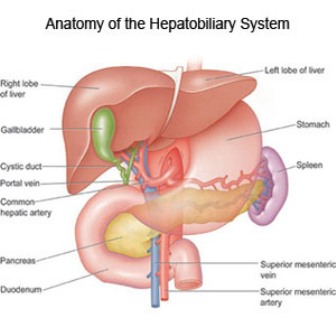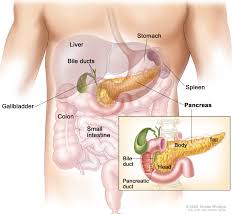


The dedicated Pawar Multispeciality Hospital is one of the best hospitals in Pune for Hypatobiliary Surgery. The hospital conducts various Hypatobiliary Surgeries.
Having to do with the liver plus the gallbladder, bile ducts, or bile. For example, MRI (magnetic resonance imaging) can be applied to the Hypatobiliary system. Hypatobiliary makes sense since "hepato-" refers to the liver and "-biliary" refers to the gallbladder, bile ducts, or bile.
The liver, pancreas, gall bladder and bile duct are known as the Hypatobiliary and pancreatic system. Surgery to treat cancers and disorders in these organs is highly complicated and challenging and requires a high level of skill and expertise.
Hypatobiliary and pancreatic surgery can be performed using minimally invasive techniques. Some common procedures include:

Hypatobiliary and pancreatic surgery is used to treat cancers and diseases of these organs. It includes the resection (removal) of primary and metastatic (secondary) tumours of the liver, gall bladder, bile duct and pancreas. It is also used to treat benign diseases like cysts, bile duct injuries and strictures (blockage), and portal hypertension. Some tumours affecting the liver, gall bladder and bile duct might need major resections, and might therefore need complex reconstruction of the bile duct, hepatic artery and portal vein.
Such procedures involve a multidisciplinary team to provide a individualised treatment plan for each patient. This team of specialists and clinicians include Hypatobiliary and transplant surgeons, medical oncologists, interventional radiologists, radiation oncologists, gastroenterologists and anaesthesiologists.

At Pawar Multispeciality Hospital, we are committed to giving you comprehensive care. Our multidisciplinary team of surgeons, nurses and therapists are here to guide you through the entire treatment and recovery process.
Patients can benefit from Pawar Multispeciality Hospital advanced equipment and facilities. Minimally invasive techniques reduce trauma and scarring while improving success rates and recovery speed, while computer-aided robotic surgery allows for added precision during surgical procedures.
Bile is a fluid produced by the liver that aids digestion. Bile drains from the liver through bile ducts to the first part of the small intestine, or duodenum, and eventually back to the bile ducts and liver. If any duct in this complex system becomes diseased or blocked, a number of serious diseases may result.
Heredity, increasing age, obesity, a high-fat diet, certain gastrointestinal conditions and certain prescription medications may increase the risk of developing biliary disease.
Although symptoms may differ among bile duct disorders, symptoms common to many of the disorders include:
Abdominal pain, especially in the upper right side of the abdomen under the rib cage
The tests performed vary according to the suspected bile duct disorder. However, tests commonly performed to diagnose many bile duct disorders may include:
Patients are treated with medications to increase the flow of bile from the liver and antibiotics are used to treat infection.
Surgery to drain bile from the liver when bile ducts are blocked.
Endoscopic retrograde choliangiopancreatography (ERCP): This procedure may help identify and remove gallstones from the bile duct.
There are two types of aproches for this opration. 1) Open Cholecystectomy 2) Laproscopic Cholecystectomy
The Pawar Multispeciality Hospital & Diagnostic Center Pune offers single incision laparoscopic cholecystectomies (removal of the gallbladder). During this procedure, surgeons operates through a single port, located in an incision in the patient's belly button, that has three distinct openings. The flexible port allows the surgeons to operate three laparoscopic instruments simultaneously. This surgery may result in a scar that is invisible or barely visible, compared with traditional laparoscopic surgeries that may leave three to four small but visible scars. Additionally, some patients who have single-incision laparoscopic surgery have shorter hospital stays and use significantly less pain medication.
Biliary disorders due to gallstones may be prevented by having the gallbladder surgically removed. The formation of gallstones may also be prevented by eating a well-balanced diet, maintaining a healthy weight and exercising regularly.